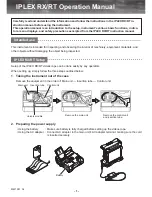
9.3 Chorus Macro (Advanced)
V-Accordion
r
83
(2) Press the
[DATA÷ENTER]
knob to select the “VALUE”
parameter, then rotate the
[DATA÷ENTER]
knob to
set the parameter value (see the indications
between brackets in the table above).
If you change one of the above parameter values, an
“(E)” appears next to the “TYPE” name to signal that
you are no longer using the presets of the macro in
question.
If you then select another “TYPE”, however, your
changes are lost and replaced by the settings of the
newly selected macro.
Note:
Simultaneously press the
[UP]
and
[DOWN]
buttons
to recall the factory setting for the currently active param-
eter.
Chorus broadens the spatial
image of the sound, adding
richness. You can choose from
8 types of chorus.
Note:
You can also copy the Cho-
rus (or even all effects) settings from another Set. See page 97.
(1) Press the
[DATA÷ENTER]
knob to select the “TYPE”
parameter, then rotate the
[DATA÷ENTER]
knob to
select an effect type.
The “TYPE” parameter on this page is a “Macro” func-
tion: it recalls suitable preset values for all chorus
parameters on the “Chorus Parameters” page. In
many instances, editing only the parameters on this
page is enough.
The available options are:
(2) Press the
[DATA÷ENTER]
knob to select the “LEVEL”
parameter, then rotate the
[DATA÷ENTER]
knob to
set the Chorus processor’s output volume (0~127).
The overall chorus volume depends on three things:
the Send level of the various sections, the output
level of the Chorus processor and the setting of the
[CHORUS]
knob.
If one of them is set to “0”, there will be no chorus. If
the Send level of a section is set to “0”, only that sec-
tion will have no chorus. Other sections If the “LEVEL”
parameter on this page is set to “0”, the Chorus pro-
cessor is effectively off for all sections.
Pre-LPF (0~7) A low-pass filter can be applied to the
high-frequency range before the signals
coming from the various sections are pro-
cessed by the reverb. Higher values make
the Send signals darker, which results in a
mellower reverberation. This parameter
only applies to the signals that are sent to
the Reverb processor. It does not alter the
sound of the active sections.
Time (0~127) This parameter sets the duration of the
reverb effect. Higher values result in
longer reverberation.
Level (0~127) This parameter sets the output volume of
the Reverb processor. It is linked to its
namesake on the “Reverb Macro” page.
Higher values result in louder reverbera-
tion.
Dly Fback
(0~127)
This parameter is only available when you
set “Character” to “6” or “7”. It specifies
the number of echoes: higher values
result in more repetitions.
Pre-Dly T.
(0~127)
This parameter sets the time interval
between the original (“dry”) signal and the
onset of the selected reverb effect. Higher
values result in a longer pre-delay time,
simulating a larger reverberant space.
Parameter
Explanation
Parameter
Explanation
Chorus 1~4
These are conventional chorus effects that
add spaciousness and depth to the sound.
FBack Chr
This is a chorus with a Flanger-like effect
and a soft sound.
Flanger
This is an effect that sounds somewhat like
a jet airplane taking off or landing.
Short Delay
This is a delay with a short delay time.
ShortDly FB
This is a short delay with many repeats.
FR-7x_2b.GB Page 83 Tuesday, August 25, 2009 3:50 PM
Содержание V-Accordion FR-7X
Страница 1: ...r Owner s Manual FR 7x GB book Page 1 Tuesday August 25 2009 10 58 AM...
Страница 138: ...138 rFR 7x V Accordion For China For China FR 7x GB book Page 138 Tuesday August 25 2009 10 58 AM...
Страница 140: ...R 602 00 0346 01 RES 738 09 FR 7x Owner s Manual E FR 7x GB book Page 140 Tuesday August 25 2009 10 58 AM...
















































